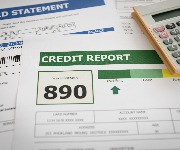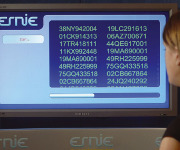Why spotting taxman scams has got harder

By embracing other ways of communicating with taxpayers, HMRC has unwittingly made it tougher to tell the difference between legitimate and scam messages.
We are now well into the start of a new tax year, a time of change for the tax regime in the UK.
It’s not just a period when we all need to get to grips with new thresholds and allowances on issues like how much we can earn before we start paying Income Tax – it’s also a ripe time of year for scammers posing as HM Revenue & Customs (HMRC).
These scams can take all sorts of forms, from emails and phone calls to even text messages, apparently from the taxman.
Telling the difference between a legitimate message from HMRC and a scam message is not always straightforward, which is why HMRC has now issued new guidance on when communication is genuine and how to spot a scam.
Watch out for this fake Government Gateway refund email scam
The taxman won’t ever phone me, right?
One added complication to spotting HMRC scams has been a change in approach towards communication from the taxman.
It used to be the case that HMRC would not contact taxpayers by phone – as such, you could rest assured that if you received a call from someone claiming to represent the taxman, it would not be legitimate, and you could hang up in confidence.
However, there are now a host of occasions when you may receive a call from HMRC.
For example, the taxman says it will contact people by telephone to discuss national minimum wage or national living wage enquiries.
It is also conducting research alongside firms like Kantar Public UK and Ipsos Mori, on subjects like what businesses expect and need from tax agents and the taxman.
You may be invited to take part in this research through an initial phone call.
Beat the taxman: 20 ways to legally pay less tax
When will HMRC email me?
While email scams have been productive for the crooks posing as HMRC, there are a host of occasions when the taxman may opt to contact you by email.
For example, the HMRC Self Assessment team are sending email alerts to some taxpayers to advise them that their annual tax summary is available to be viewed.
The taxman says it may also contact some people by email who have opened Help to Save accounts, in order to remind them they have not paid any money into the account and to refresh them on the benefits of the service.
Another occasion when you may receive an email from the taxman is if you have registered for 30 hours of free childcare, or opened a ‘tax-free childcare account’.
The emails will detail the benefits of the account, and explain how your entitlement may change as your child reaches school age.
The taxman states these emails will direct recipients over to its Gov.uk website, where you will be able to sign into your account.
Other genuine emails from HMRC will include those to people who have signed up to help improve Gov.uk, as well as those who need to complete a VAT return, in order to remind them when the return is clear.
Below is an example of a genuine email one of our team received from the taxman (click for a larger view) to give you an idea of how such messages might look. Note the blacked out part is where it contained their name in full.
Will the taxman ever text me?
Again, there was a time that text messages claiming to be from HMRC could confidently be dismissed as a scam.
However, HMRC says it is sending text messages to some borrowers who are behind on their tax payments, providing details for paying the taxman as well as a helpline they can contact.
It is also sending messages to give advice about the importance of making payments using the correct information.
How do I spot genuine communication from the taxman?
While there are a host of occasions when HMRC will opt to contact you through measures other than by letter, there are still simple things to look out for which will help you spot whether the email, phone call or text message is a scam.
A very important factor is that no matter how the taxman gets in touch, it will never ask you to share personal information, such as your full address, your postcode, your unique taxpayer reference or details of your bank account.
Similarly, HMRC will never notify you of a tax rebate, offer you a repayment, or provide you with a non-HMRC personal email to send a response to.
Checking the sender email for any message sent from the taxman is another key measure for spotting scam emails.
As the taxman points out, it’s important to look at the sender’s email address, as these are often similar – though not the same – as genuine HMRC addresses, such as ‘refunds@hmrc.org.uk'.
These scammers can also spoof the ‘from’ address so that it appears to be from a legitimate address.
Other common features from scam emails are using a common greeting (so ‘Dear Sir’ rather than your actual name) and emphasising that immediate action is needed.
Muddying the water
On one hand, it is welcome that the taxman is adapting to different ways of communicating with taxpayers.
Just as many of us now communicate with our banks, energy suppliers and the rest through email, text message and web chats, it makes sense that we should be able to do the same with the taxman.
However, posing as the taxman is a lucrative tactic for scammers and by adopting email and text communication, HMRC is muddying the waters somewhat for people trying to tell the difference between genuine HMRC messages and those from scammers.
There is a danger that by trying to adapt to the realities of life in 2019, the taxman has provided a boost to the crooks trying to impersonate the taxman in order to empty our bank accounts or steal our identities.
Most Recent
Comments
-
MK You could invent a reason as you suggest. But what is wrong with the real reason? "I'm sorry. You phoned me. I don't know who you are. Give me a reference number/code and I will phone you back" Perhaps then they will realise that you are not likely to be taken in by scams, theirs or anyone elses.
REPORT This comment has been reported. -
People receive so few emails from HMRC. How is anybody supposed to know whether an email address is real or is a close copy?
REPORT This comment has been reported. -
Firstly, NEVER click on a link in an email, go to the HMRC webpages and work from there, ditto if you receive a text. If "HMRC" phone you, invent a reason why you are unable to talk to them (an urgent Dr's appointment ..). Then later call them back on a number YOU have for them, NOT what they have given you. Ditto if you get a letter from them.
REPORT This comment has been reported.
Do you want to comment on this article? You need to be signed in for this feature










12 May 2019